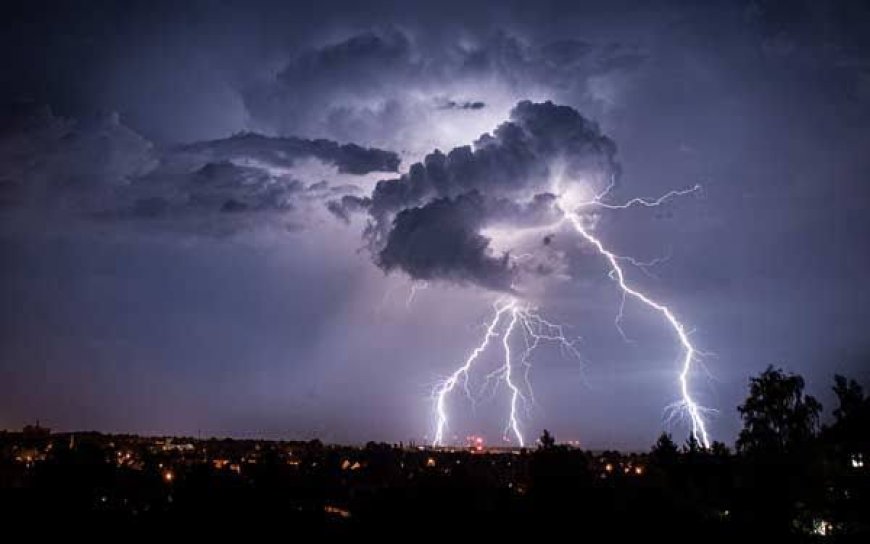Pakistan Records 73% Rise in Monsoon Rainfall in 2025, PDMA
According to the Provincial Disaster Management Authority (PDMA) Punjab, Pakistan has registered a 73% increase in monsoon rainfall in 2025 compared to historical averages. This sharp rise has contributed to severe flooding, causing over 165 deaths in Punjab alone and an estimated 221 nationwide.

According to the Provincial Disaster Management Authority (PDMA) Punjab, Pakistan has registered a 73% increase in monsoon rainfall in 2025 compared to historical averages. This sharp rise has contributed to severe flooding, causing over 165 deaths in Punjab alone and an estimated 221 nationwide. Drainage systems in urban areas such as Lahore, Rawalpindi, and Islamabad have been overwhelmed. Authorities warn of four to five more rain spells and have activated flood alerts across multiple river basins. With intensified rainfall linked to climate change trends and glacial melt, the country faces mounting pressure on infrastructure, migration, and community resilience.
-
73% increase in monsoon rainfall recorded across Pakistan (PDMA Punjab)
-
165 deaths reported in Punjab due to rain-related incidents so far
-
Flood alerts issued for Ravi, Jhelum, Sutlej, Chenab, Indus basin
-
4–5 more rain spells expected through late July
-
Intense urban flooding in Lahore, Rawalpindi, Islamabad, disrupting daily life
-
PDMA warns of mounting climate change impacts amid increased rainfall volatility
-
Shock to Infrastructure
-
Drainage systems in cities like Lahore, Islamabad, and Rawalpindi failed under extreme pressure, resulting in road inundation and halted traffic. Emergency services scrambled to respond.
-
Life and Livelihood Risks
-
Fatalities from building collapses, drowning, electrocution, and lightning strikes predominantly occur in vulnerable areas. Over 50 deaths occurred in a single day in Punjab.
-
Repeated Flood Spells
-
With the insurance of four to five additional rain cycles, water levels in key rivers remain elevated; low-level flooding at Taunsa, Kalabagh, and Chashma is ongoing.
-
Climate Shift Confirmation
-
Pakistan ranks among the world’s nations most vulnerable to such fluctuations. The 2022 floods, referred to as “once-in-a-century”, claimed over 1,700 lives and damaged nearly one-third of the country. 2025’s surge echoes that severity.
-
Late June (26th onward): Monsoon onset—first flash flood alerts issued. Hundreds displaced.
-
Early July: 82% above-average rainfall nationwide; Punjab alone saw 124% increase compared to July 2024.
-
July 17: 54 fatalities in 24 hours, lifting national toll to 178.
-
July 18: Death toll nears 180. Chakwal recorded 423mm—twice the monthly average.
-
July 21: Pakistan records 73% rainfall increase; cumulative fatalities reach 216 with 135 in Punjab.
-
Late July: Continued monitoring as PDMA warns of fresh rain spells through July 25.
-
PDMA & PMD issued continuous weather advisories since June and urged authorities to maintain high alert.
-
Section 144 enforced along riverbanks and nullahs to prevent risky behavior.
-
Enhanced police patrolling in disaster-prone zones.
-
Army helicopters, drone teams, Rescue 1122, and local volunteers deployed for evacuation and relief in flood-hit areas.
-
WASA and municipal bodies initiated drain clearing, pumping operations, and emergency response in cities.
-
Government pledged financial support to affected families per disaster relief policies.
-
Temporary shelters, medical aid, and food supplies provided across compartments.
Pakistan's 73% surge in monsoon rainfall in 2025 is a compelling alarm about accelerating climate risk and systemic weakness. The high death toll, city-wide inundation, and recurring flash floods underline an urgent need for sustainable urban planning, river management, and climate-resilient infrastructure.
While early-warning systems and emergency mobilization helped save lives, ongoing threats demand long-term strategies—like river embankment fortification, school and housing safety codes, and resilient agricultural models. Engaging citizens through awareness and civic preparedness is also vital.

 Ateeq Ur Rehman
Ateeq Ur Rehman